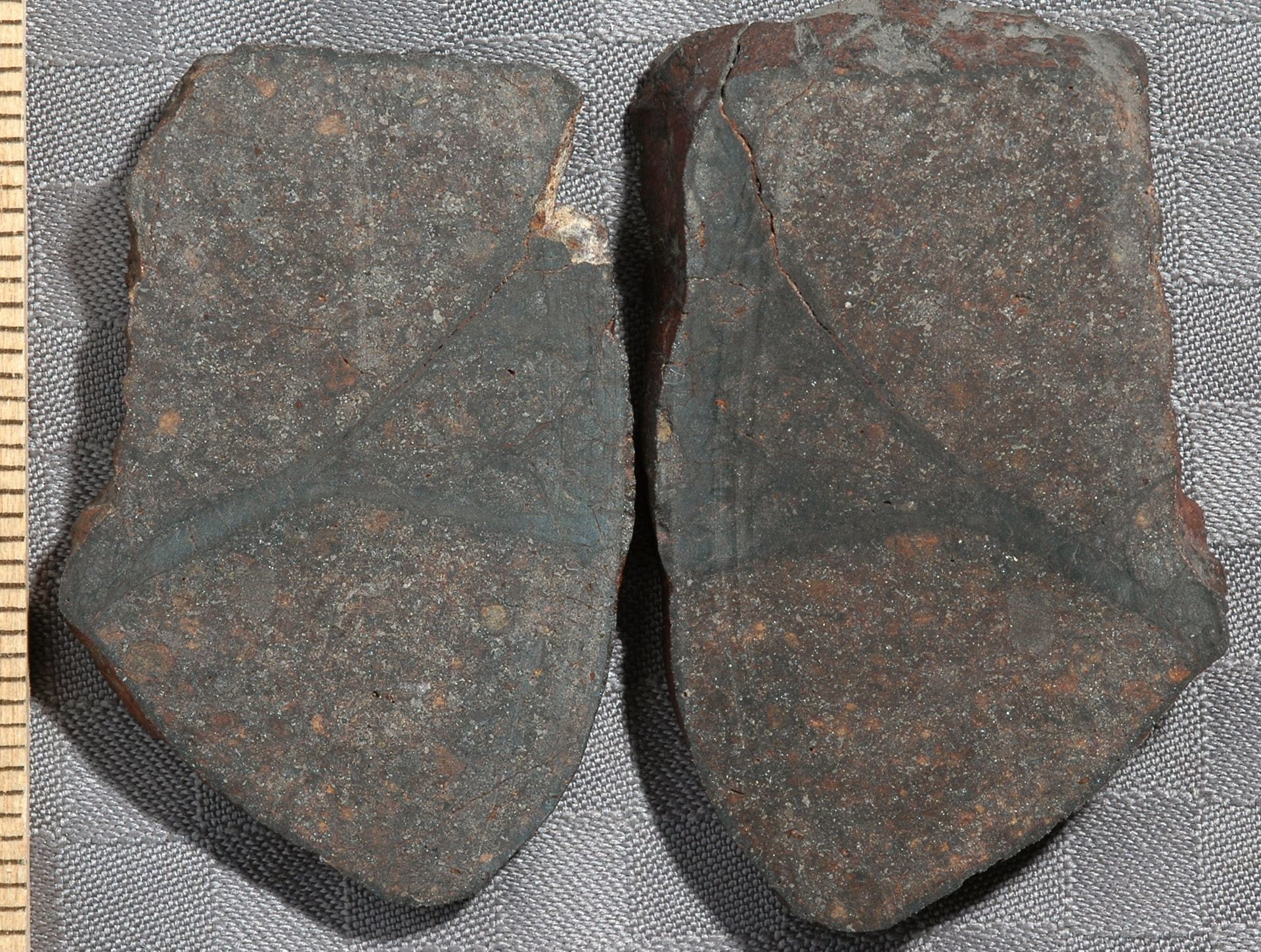If a rock has veins, particularly linear or parallel ones, then it is not a meteorite
If the veins stick out in positive relief, as in many of the rocks pictured below, then the rock is definitely not a meteorite because the exposed veins would have been the first things to melt and ablate away as the meteorite passed through the atmosphere. The “stick-out” veins of these rocks occur because the veins are richer than the matrix in quartz, a very hard mineral, and are hence less subject to abrasion and physical weathering than the matrix. This hardness difference leads to “preferential weathering.”
Note that none of these rock has a fusion crust.




Now that I have said that, I will back off. Some meteorites do have veins of impact melt. These veins are never linear, however. They do not stand out in positive relief as do many of those above. Veins in meteorites are usually about the same color as the matrix of the rock because they are composed of melted rock.
